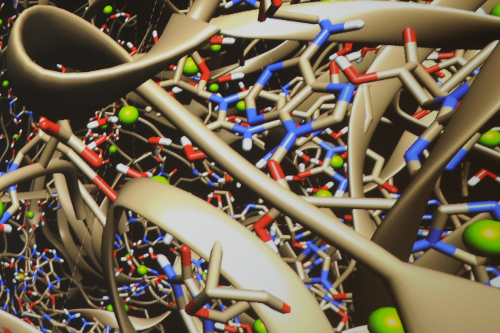A boost to ideas
The institute incentive funding is intended to help an early career researcher to undertake as PI a short research project or to encourage scholars who are willing to engage in innovative multidisciplinary research activities outside the scope of the current team projects.
In conjunction with our research strategy to invest in the future and detect new talents and areas of expertises, we selectively seed new areas of collaborations across traditional disciplinary boundaries. See below our archive of previously funded projects. All Institute affiliates are eligible to apply for these funding awards.
Among the actions ISCD is supporting on the long run, scientific visualisation holds a special status as it provides a look into the details and complexities of the data computed or acquired by researchers.
Scientific visualisation
Scientific visualisation and visual data analysis, use the graphical representation as a means of gaining understanding and insight into the data. It also serves the purpose of communication, outreach and training for various audiences.
At ISCD we are working on combining tools and workflows related to game engines and scientific simulations to produce high quality and accurate visuals. A working group carries out research in visualisation as well as in mathematical concepts to better understand and represent data. We apply our research to both fundamental problems and practical applications in sciences, humanities or medecine (read more here).
Former actions
Dir.: P. Fortin (LiP6, Sorbonne Université), 2012
In astrophysics, the study of galactic dynamics requires large-scale numerical simulations of N “bodies” (namely the N- body problem), each body corresponding to a galaxy element. The falcON algorithm (force algorithm of complexity O(N)) enables very efficient N-body simulations in this astrophysical context. A doubly recursive pass, inspired by both the Barnes-Hut algorithm and the Fast Multipole Method, is indeed performed over an octree data structure. The corresponding gyrfalcON code, highly optimized in C++ programming and publicly available in the NEMO toolbox, thus outperforms most other astrophysical N-body codes on one single CPU core. This code is however only sequential. Its parallelization is therefore crucial, as well as challenging, on modern architectures in order to gain one (or two) order(s) of magnitude in computation time or in the number of bodies.
Dir.: J.F. Babadjian, C. Maurini, 2015
The fundamental aim is to investigate the role of heterogeneities and anisotropy in crack propagation and nucleation. The results can then be used to conceive meta-materials with enhanced fracture properties. The main problem in numerical simulations is the identification of the crack pattern and its evolution in time. The use of regularized phase-field approach virtually solves the first problem for the case of heterogenous isotropic media. We propose to address here two main issues: i) the derivation and analysis of regularized approached accounting for strongly anisotropic fracture and elastic energies and ii) the precise modeling of time discontinuities in quasi-static evolutions by considering visco-elastic/parabolic approximation and/or time parametrization for solutions with bounded-variations in time to rate independent processes.
Dir.: D. Markham, 2016
The overarching aim of this project is to develop and implement quantum simulators and demonstrate quantum advantage. For this we focus on two particular cases of quantum simulation, the class of Instantaneous Quantum Polynomial computation (IQP) and Boson sampling. In IQP circuits are restricted to gates being diagonal in one basis, implying that they commute and in principle can be carried out instantly. It has been shown that the statistics produced by such circuits cannot be simulated efficiently classically (or more accurately that if they could it implies the collapse of the polynomial hierarchy to the third level), and can be used to model interesting many-body Hamiltonians. Thus they demonstrate the superiority of quantum subuniversal devices. In Boson sampling photons are sent into a large interferometer, and measured upon exit, and it has similarly been shown that the ability to classically simulate the output would imply collapse of the polynomial hierarchy, again demonstrating quantum superiority.
Dir.: J.C. Faugère, M. Safey El Din, E. Schost, 2017
The primary goal of this PhD thesis is to design efficient algorithms and implementations for solving structured polynomial systems that have the ability to tackle systems which are out of reach of the state of the art. This thesis will focus on systems defining rank defects in matrices with polynomial entries, especially when some group action leaves invariant the system. We will investigate two solving techniques : one is based on continuation homotopy and the other one is based on Grobner bases.
- Scientific computing and visualisation (from modelling to simulation)
- Complex data analysis (data science, big data, data analytics, …)
Consult the list of selected projects.

